A well-organized store attracts more customers. Retail display racks play a crucial role in showcasing products, improving store layout, and enhancing the shopping experience. They help retailers maximize space while making products more accessible. By using the right display racks, stores can boost sales, increase brand visibility, and create an appealing shopping environment. Choosing the right rack depends on store size, product type, and customer preferences. In this article, we will discuss eight key aspects of the use of retail display racks and how they benefit store owners.
Table of Contents
ToggleEnhancing Product Visibility with Retail Display Racks

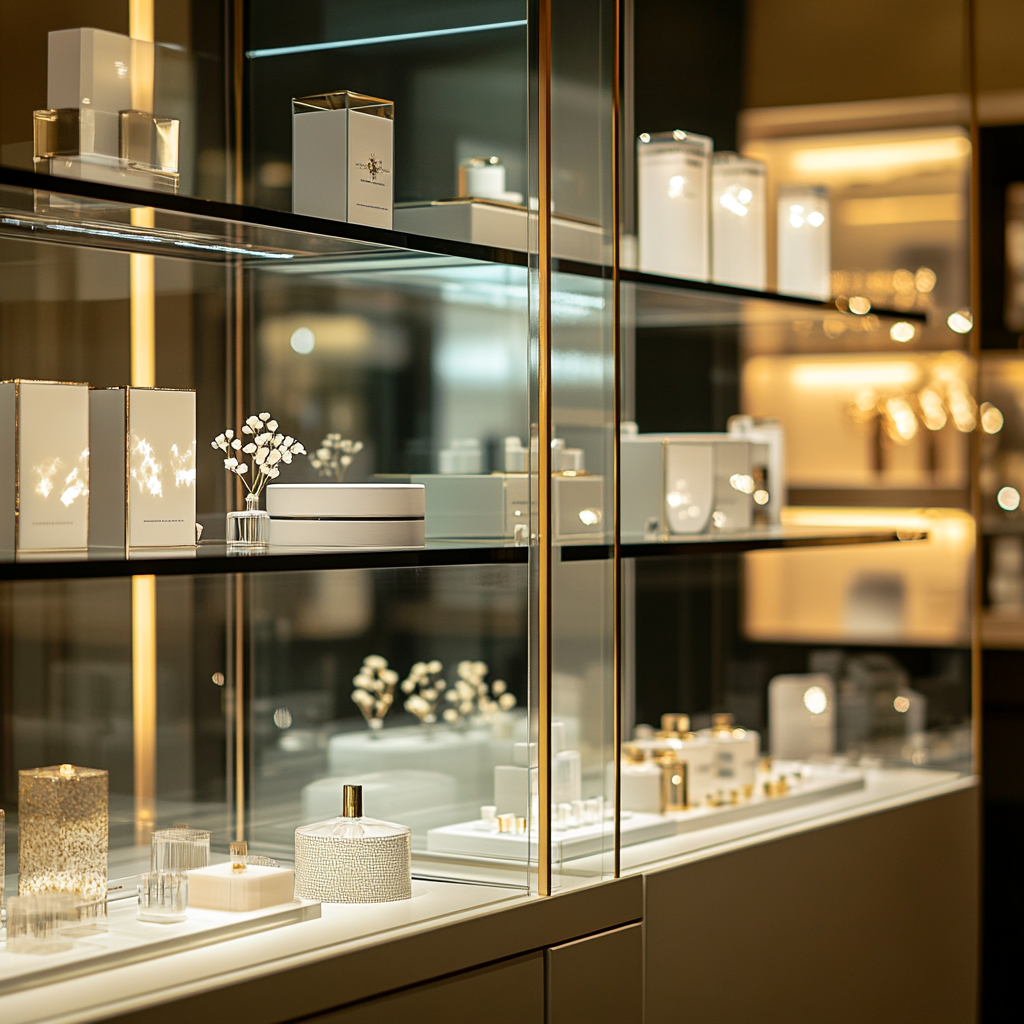
Retail display racks play a crucial role in increasing product visibility. They help attract customers, guide purchasing decisions, and make shopping easier. A well-placed and well-designed rack ensures products stand out. This leads to higher sales and better customer engagement. In this section, we will explore how retail display racks enhance product visibility.
Highlighting Featured Products Effectively
Retail display racks help showcase featured products. They draw attention to new arrivals, promotions, and best-sellers. Customers notice these products quickly. This increases the chances of a sale.
Positioning Racks for Maximum Exposure
The location of a display rack matters. Placing it in high-traffic areas increases visibility. Store entrances, checkout counters, and aisle intersections work best. Customers naturally pass through these areas. When they see a well-organized display, they stop to look. This improves product awareness.
Retailers should also avoid clutter. Too many racks in one spot confuse customers. A clean layout keeps the focus on the products. Strategic placement ensures that featured items remain visible and attractive.
Another key factor is eye-level placement. Customers tend to notice items at eye level first. Displaying products within this range increases visibility. Lower or higher shelves work for less important items. Popular products should always be at eye level.
Using Lighting to Enhance Product Display
Lighting makes a huge difference in product visibility. Bright, focused lighting highlights key products. It draws attention and makes items stand out. Dull or poor lighting can reduce the impact of even the best displays.
Spotlights and LED lights work well with glass display cases. They enhance the clarity of the product. Customers see details clearly, making them more likely to buy.
Color temperature also matters. Warmer lighting creates a cozy atmosphere. Cooler lighting gives a modern, clean look. The right choice depends on the store’s theme and product type. Jewelry stores, for example, use bright white lights to enhance sparkle. Smoke shops often use soft lighting for a relaxed feel.
Using Contrasting Colors to Attract Attention
Color contrast helps products stand out. A well-designed display rack uses colors that enhance product visibility. Bright-colored backdrops make neutral products pop. Dark backgrounds work well for lighter items.
Retailers should also consider brand colors. Matching display racks with a brand’s identity strengthens recognition. This creates a cohesive shopping experience. Customers associate colors with specific brands, reinforcing their recall.
Additionally, signage plays a role. Bold, clear signs make displays more engaging. Signs should have easy-to-read fonts and clear messages. This directs customer attention to the featured items.
Rotating Displays to Keep Visibility Fresh
Changing product placement keeps displays fresh. Customers get used to store layouts over time. They may stop noticing certain items. Rotating displays regularly solves this issue.
Retailers should change featured products every few weeks. This creates a sense of novelty. Customers revisit stores to see what’s new. A fresh display increases impulse purchases.
Additionally, seasonal displays work well. Holiday-themed arrangements attract shoppers. Limited-time promotions encourage quick decisions. By updating displays often, stores maintain high visibility for their products.
Increasing Impulse Purchases Through Better Visibility
Retail display racks encourage impulse buying. They make products easily accessible. When customers see attractive displays, they buy items they didn’t plan to purchase. This increases overall sales.
Placing Display Racks Near Checkout Counters
Checkout counters are prime locations for display racks. Customers often browse while waiting in line. Placing small, affordable items near the counter increases last-minute purchases.
Common products include accessories, snacks, or limited-time offers. These items should be easy to grab. Customers don’t need much time to decide. A well-organized rack makes the selection process smooth.
Using small baskets or shelves helps, too. They make it easier to showcase a variety of products. Keeping the layout simple prevents clutter. Customers should be able to scan items quickly.
Grouping Complementary Items for Better Visibility
Grouping related items enhances product visibility. Customers see how products work together. This encourages them to buy more.
For example, a smoke shop can display glass cases with accessories like grinders and lighters. When customers see everything together, they feel the need to complete their set. This leads to higher sales.
Stores can also create themed sections. A “starter kit” display for beginners works well. Grouping products by theme simplifies decision-making. Customers feel guided rather than overwhelmed.
Using Vertical Space to Maximize Visibility
Retail display racks should make full use of vertical space. Tall racks attract attention from a distance. They also create more room for products.
Wall-mounted displays are effective for small stores. They keep products at eye level without taking up floor space. Shelving units with multiple levels allow customers to see different options easily.
Stores should avoid placing key products too high or too low. Customers may ignore them if they’re hard to reach. Instead, frequently purchased items should be within easy access.
Keeping Displays Neat and Well-Stocked
A cluttered or empty display reduces visibility. Customers may overlook items in a messy setup. Neatly arranged products catch the eye and invite browsing.
Retailers should restock shelves regularly. Empty racks give a bad impression. Customers may assume the store lacks inventory. Keeping shelves full reassures them that products are available.
Additionally, maintaining proper spacing helps. Overcrowding makes it difficult to see individual items. A well-organized display ensures that every product gets noticed.
Boosting Brand Image Through Well-Designed Display Racks
Retail display racks do more than showcase products. They also strengthen a brand’s image. A well-designed display tells customers about the store’s identity and quality.
Using Custom Racks to Reflect Brand Identity
Custom-designed racks enhance brand recognition. Stores can use their logo, colors, and unique design elements. This makes the brand stand out.
For example, a smoke shop can use sleek glass cases with a modern finish. This creates a premium feel. Wooden shelves give a rustic, eco-friendly look. The choice of material affects customer perception.
Retailers should choose racks that match their store’s theme. Consistency builds a strong brand presence. Customers remember stores that create a distinct visual impression.
Incorporating Digital Displays for Better Engagement
Digital screens add an interactive element to retail displays. They showcase product information, videos, and promotions. Customers engage more with dynamic content.
For example, a display screen near a glass showcase can highlight product benefits. It can show close-up shots of the material and durability. This enhances customer confidence.
Digital price tags also improve the shopping experience. They update prices instantly and display promotions clearly. This makes product details more visible and informative.
Maintaining High-Quality Racks for a Professional Look
The condition of display racks affects customer perception. Worn-out, damaged racks make the store look unprofessional. High-quality fixtures create a positive impression.
Retailers should invest in durable materials, and glass showcases should be clean and scratch-free. Wooden shelves should have a smooth finish, and metal racks should be sturdy and well-maintained.
Regular cleaning also matters. Dusty or cluttered displays reduce product appeal. Keeping racks spotless ensures they enhance visibility effectively.
Creating a Cohesive Store Layout for Better Flow
The store layout influences how customers view products. A well-structured arrangement ensures a smooth shopping experience.
Retailers should organize racks to create clear pathways. Customers should move through the store without obstacles. A well-planned layout increases exposure to different sections.
Using different display heights creates depth. Tall racks at the back and shorter ones in front create a balanced look. This prevents overcrowding and improves visibility.
Retail display racks play a vital role in enhancing product visibility. They highlight key products, encourage impulse buying, and strengthen brand identity. Strategic placement, proper lighting, and regular updates keep displays effective. By investing in high-quality racks and smart layouts, retailers can maximize product exposure and boost sales.
Maximizing Store Space and Organization
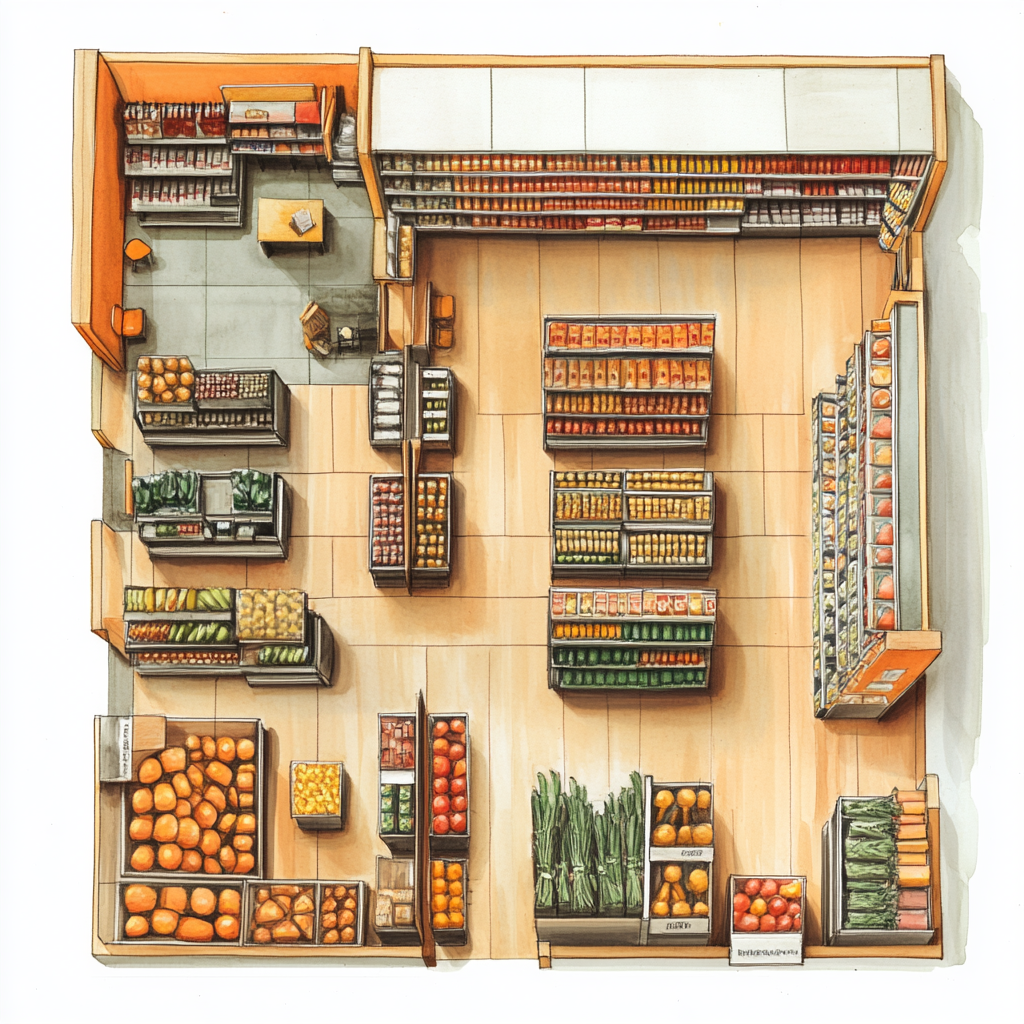
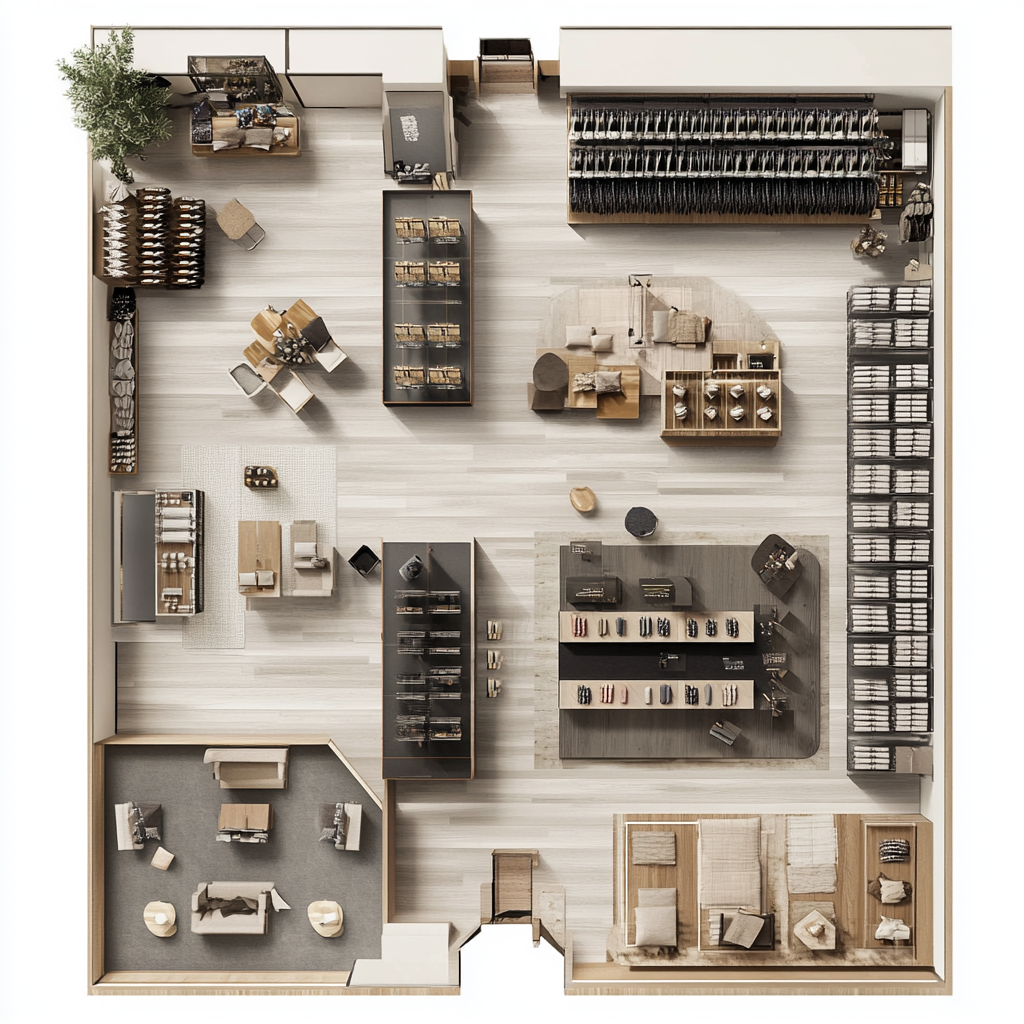
Retail display racks help businesses manage store space efficiently. They allow stores to display products neatly while making the most of available space. A well-organized store attracts more customers and improves shopping experiences. In this section, we explore how retail display racks contribute to space management and organization.
Utilizing Vertical Space for Maximum Efficiency
Many stores have limited floor space. Retail display racks help businesses maximize their vertical space. Instead of cluttering the floor, store owners can use height to showcase products. This method keeps stores neat and organized.
Stacking products vertically makes shopping easier. Customers can scan multiple products at once without moving around too much. This improves store navigation. When shoppers find what they need quickly, they are more likely to make a purchase.
Using vertical space also allows for better product categorization. Stores can arrange products in a logical order. For example, placing frequently bought items at eye level encourages impulse purchases. Lower shelves can hold bulkier items, while top shelves store rarely purchased goods. This strategy keeps high-demand products accessible while optimizing storage.
Additionally, tall display racks create a professional and modern look. A well-organized store looks more appealing. Customers enjoy shopping in an environment that feels spacious rather than cramped. Vertical shelving solutions also help prevent overcrowding in aisles. More open space allows for smooth customer movement.
Another benefit of vertical space utilization is improved stock management. Employees can quickly restock products by using racks with adjustable shelving. This flexibility ensures that shelves remain full without taking up unnecessary space. It also allows stores to rotate inventory easily.
Overall, vertical display racks provide a cost-effective way to manage space. They increase storage capacity, enhance store organization, and improve customer experience.
Creating Clear Store Layouts with Strategic Rack Placement
The placement of retail display racks impacts store organization. Poor placement can make a store feel cluttered and confusing. Strategic placement ensures smooth traffic flow and enhances the shopping experience.
Retailers should position racks in a way that guides customers naturally. Aisles should remain clear and accessible. Wide pathways encourage customers to explore more sections of the store. Narrow or blocked aisles discourage browsing and can reduce sales.
A well-planned store layout also prevents congestion. During peak shopping hours, customers should be able to move freely. Well-placed racks keep the store looking neat and organized even when it is busy.
Retailers can also use different rack styles to define sections. For example, gondola shelving can separate aisles, while wall-mounted racks save floor space. Corner display racks make use of overlooked areas. These different rack types work together to create a seamless shopping experience.
Another important factor is placing best-selling items in high-traffic areas. High-demand products should be positioned near the entrance or checkout counters. This strategy increases visibility and boosts sales. Slower-moving items can be placed in less prominent areas without disrupting store flow.
Additionally, strategic placement helps store employees manage inventory efficiently. When racks are arranged logically, employees spend less time restocking. This organization improves workflow and reduces labor costs.
Finally, a clear layout contributes to store branding. A well-structured space reflects professionalism. It signals that the business values organization and efficiency. Customers associate an orderly environment with high-quality products and services.
Reducing Clutter and Enhancing Store Aesthetics
Cluttered stores create a negative shopping experience. Too many products crammed into small spaces overwhelm customers. Retail display racks solve this problem by keeping products neatly arranged.
Racks provide designated spots for each product category. This structure prevents disorganized shelving. Customers can easily locate what they need without searching through messy piles. A clutter-free store feels more inviting and comfortable.
Organized racks also improve product visibility. When items are displayed neatly, customers can view their options without confusion. Clear product presentation encourages browsing and increases buying confidence.
Another advantage is maintaining consistent aesthetics. Retailers can choose display racks that match their store’s theme. Wooden racks create a warm and natural atmosphere, while glass and metal fixtures add a modern touch. The right display enhances the overall look and feel of the store.
Clutter reduction also improves security. When products are well-organized, employees can monitor stock levels more effectively. A messy store makes it easier for shoplifters to hide stolen goods. Organized racks deter theft by keeping products in clear view.
Moreover, a clean store boosts brand reputation. Customers judge a business based on its presentation. A disorganized store suggests carelessness, while a well-maintained space conveys professionalism. Investing in proper retail racks ensures a visually appealing and functional retail space.
Optimizing Storage and Inventory Management
Retail display racks not only improve store appearance but also enhance inventory control. Organized shelving allows businesses to track stock more efficiently. Well-structured racks make it easier to manage products and restock shelves quickly.
Inventory tracking becomes more manageable with categorized shelving. Grouping similar products together reduces the risk of misplaced items. Employees can quickly identify low-stock items and reorder them before they run out. This efficiency prevents lost sales due to stock shortages.
Additionally, display racks help prevent overstocking. When shelves are arranged properly, retailers can assess stock levels at a glance. Overstocking leads to clutter and wasted storage space. Well-organized racks ensure a balance between available stock and storage capacity.
Another benefit is minimizing product damage. When items are stored haphazardly, they are more likely to get damaged. Proper display racks provide secure storage, reducing product loss. Fragile items, such as glass products, should be placed on stable shelves to prevent breakage.
Moreover, adjustable shelving allows for flexible inventory arrangements. As product demand changes, retailers can modify rack layouts to accommodate different stock levels. This adaptability ensures that retail space remains optimized.
Finally, streamlined inventory management reduces labor costs. Employees spend less time searching for misplaced products or rearranging cluttered shelves. A well-organized store operates more efficiently, improving both employee productivity and customer satisfaction.
Conclusion
Retail display racks play a crucial role in maximizing store space and organization. They allow retailers to use vertical space efficiently, create clear store layouts, reduce clutter, and improve inventory management. A well-organized store attracts more customers and increases sales. Investing in the right retail display racks ensures a neat, functional, and visually appealing retail space.
Improving Customer Experience and Shopping Convenience
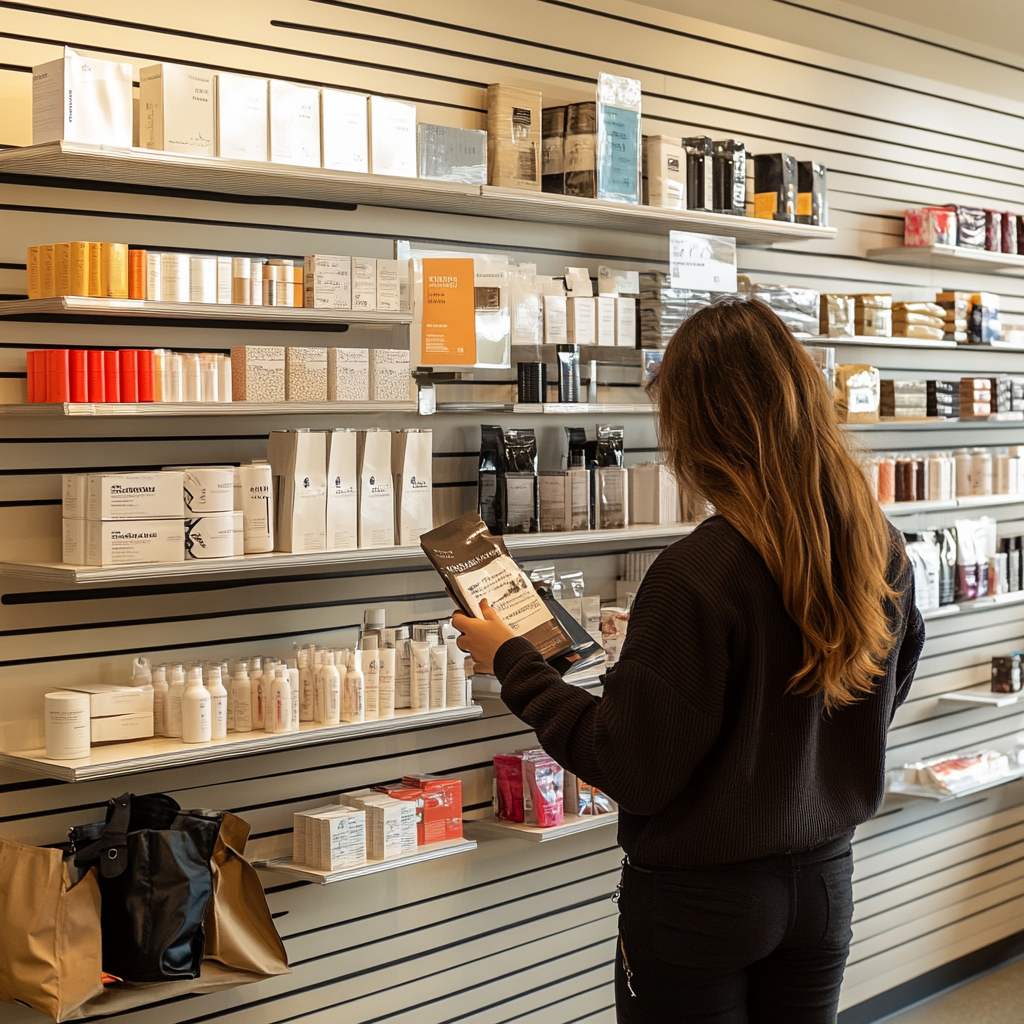

Retail display racks play a crucial role in enhancing the shopping experience. They help customers find products easily, navigate the store effortlessly, and make quick purchasing decisions. A well-designed retail display rack creates a seamless shopping journey. It ensures that customers feel comfortable while browsing. Below, we explore different ways retail display racks improve customer experience and convenience.
Guiding Customers to the Right Products Efficiently
Customers prefer stores where they can find products quickly. Retail display racks help organize products logically. They reduce the time customers spend searching for what they need. Clear labeling, logical grouping, and proper positioning make shopping stress-free.
A well-placed retail display rack directs customers to key product areas. Stores can use different rack styles to highlight categories. End cap displays grab attention at the end of aisles. Slatwall racks keep products neatly arranged on walls. Glass showcases protect high-value items while keeping them visible.
Retail display racks also support customer independence. Shoppers do not need to ask for assistance when products are easy to find. This improves customer satisfaction. Organized racks also reduce congestion, especially in busy retail spaces. Customers can move around freely without feeling overwhelmed.
Transitioning to digital displays on racks adds another layer of convenience. Interactive screens can guide customers to promotions and related products. Retailers who invest in well-structured display racks create a more enjoyable shopping experience.
Reducing Customer Decision-Making Time
Customers appreciate simplicity. Retail display racks simplify product selection by presenting options clearly. They eliminate clutter, ensuring customers focus on the right products. A well-structured rack showcases product features, making comparisons easier.
For example, a smoke shop can use display racks to group accessories like grinders, pipes, and rolling papers together. This helps customers find everything they need in one spot. Glass display cases for premium items allow customers to see their options clearly before making a choice.
Eye-level placement is another strategy that speeds up decision-making. Products displayed at eye level attract more attention. Customers are more likely to pick items placed within easy reach. Lower shelves work well for bulk products, while top shelves store less frequently purchased items.
Highlighting bestsellers and promotions on display racks further streamlines the buying process. Limited-time deals placed on well-lit racks encourage impulse purchases. By strategically designing retail display racks, stores create a faster and smoother shopping experience.
Encouraging Customer Interaction and Engagement
Retail display racks do more than just store products. They invite customers to interact with items. Customers who engage with products are more likely to make a purchase.
Interactive retail displays make shopping more exciting. Smoke shops can use glass showcases with LED lighting to highlight special collections. Customers feel encouraged to explore and appreciate high-quality craftsmanship. Open-access shelving allows customers to touch and feel products before buying.
Sampling stations placed on display racks increase engagement. For example, vape stores can set up testing areas where customers try different flavors. This encourages immediate purchasing decisions.
Color psychology also plays a role in customer engagement. Display racks in warm colors create a welcoming atmosphere. Cool-colored racks convey a sleek and modern feel. Thoughtfully designed racks enhance customer emotions and make shopping more enjoyable.
Incorporating digital signage on display racks further boosts engagement. Video screens showcasing product benefits attract attention. QR codes on racks direct customers to online reviews and product demonstrations. These features create a richer shopping experience.
Enhancing Store Navigation and Comfort
A well-organized store keeps customers comfortable. Cluttered layouts confuse and frustrate shoppers. Retail display racks ensure smooth store navigation. They define pathways and prevent overcrowding.
Modular display racks provide flexibility. Stores can rearrange them to accommodate seasonal changes. Smoke shops can adjust shelving heights to showcase new product arrivals. Mobile display units allow easy adjustments based on customer traffic patterns.
Proper spacing between display racks also matters. Narrow aisles make customers feel confined. Wider gaps between racks create an open and inviting space. Strategic rack placement ensures an intuitive flow from one section to another.
Additionally, accessible design improves customer comfort. Display racks positioned at appropriate heights cater to all customers. Lower shelves accommodate shorter individuals, while higher racks remain reachable with step stools. This inclusivity ensures that all shoppers feel valued.
By focusing on convenience, retailers enhance the overall shopping experience. Thoughtfully arranged display racks transform a store into a pleasant and efficient space.
Conclusion
Retail display racks improve customer experience in multiple ways. They guide shoppers efficiently, reduce decision-making time, encourage engagement, and enhance store navigation. When designed strategically, these racks contribute to a seamless shopping journey. Retailers who prioritize customer convenience gain a competitive edge. Investing in high-quality display racks leads to better customer satisfaction and increased sales.
Boosting Sales Through Strategic Product Placement
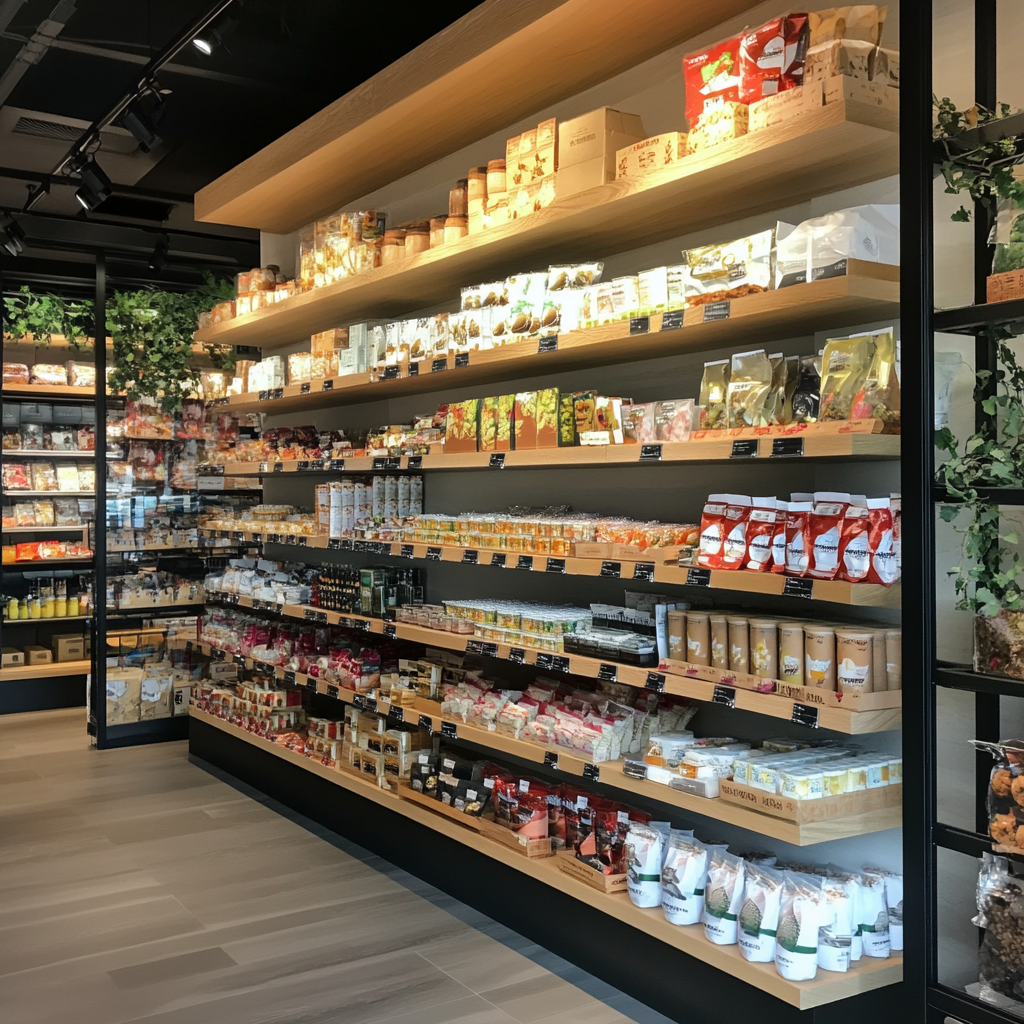
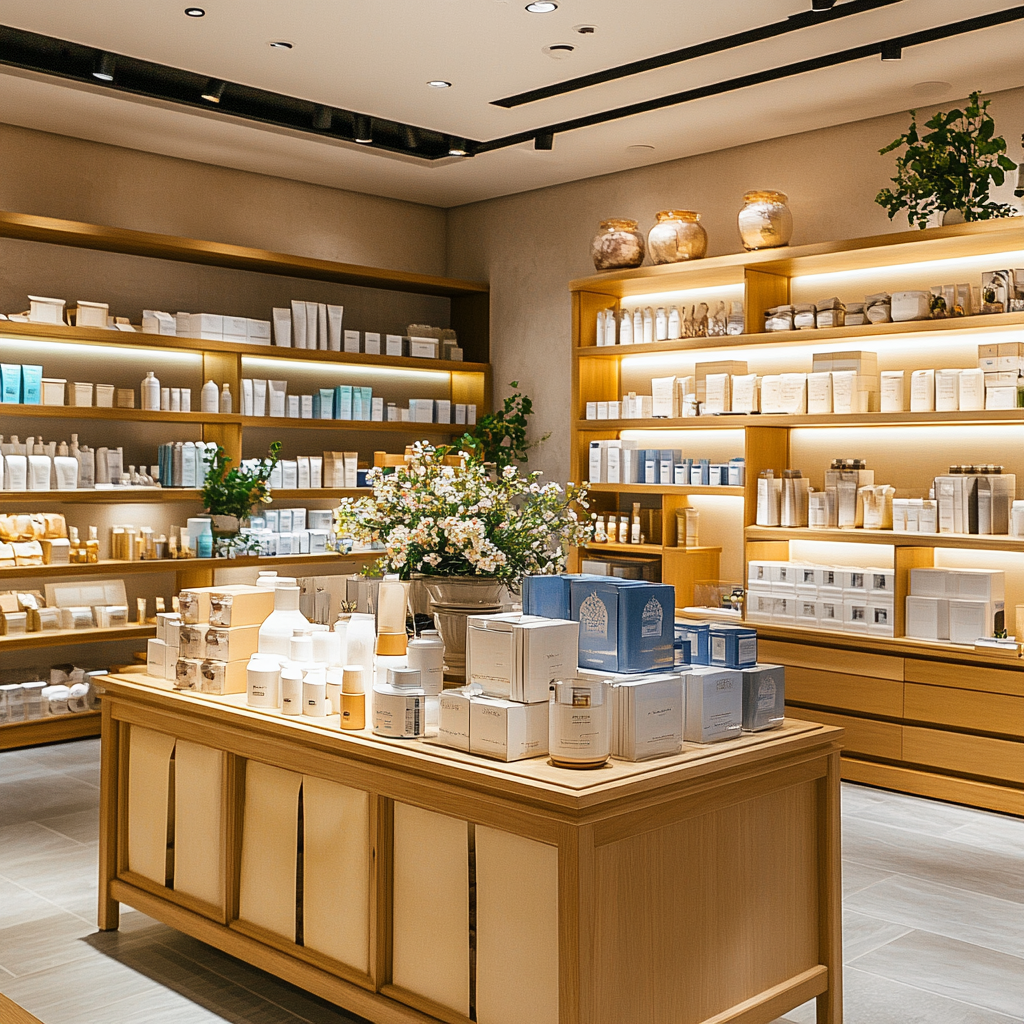
Retail display racks play a crucial role in increasing sales. Proper placement influences customer decisions and encourages impulse buying. A well-organized display rack makes products more appealing and accessible. By using effective placement strategies, stores can maximize their sales potential. Below are key strategies to boost sales through strategic product placement.
Placing High-Margin Items at Eye Level
Customers tend to notice items placed at eye level first. This prime space is ideal for high-margin products. By positioning these items within easy reach, stores can increase their chances of selling them.
Retailers need to understand customer behavior. Shoppers often scan shelves from left to right and top to bottom. The most valuable space is at eye level, where customers naturally focus. Placing high-profit items in this zone maximizes visibility and encourages purchases.
Impulse products also perform well at eye level. These include small accessories, promotional items, or best-selling products. When customers see these items without searching, they are more likely to buy them. This technique works effectively in smoke shops, where customers look for accessories, rolling papers, or flavored wraps.
Another effective method is grouping related high-margin items. When a customer picks up one item, they may be tempted to buy another. For example, placing premium glass hookahs next to high-end flavored tobacco creates a logical purchase combination. This approach increases the basket size and improves sales volume.
Stores should also use shelf talkers or signage. These tools highlight the benefits of high-margin products. A small tag that reads “Best Seller” or “Limited Stock” can push customers to make quick decisions. Many buyers hesitate, but a visual cue can create urgency.
Additionally, lighting plays a role in enhancing eye-level product displays. Proper lighting draws attention to featured items. If a store wants to emphasize a new product, a focused light source makes it stand out. This subtle technique keeps customers engaged and encourages purchases.
In summary, placing high-margin items at eye level increases visibility and sales. Customers naturally focus on this area, making it a prime location for profitable products. Retailers can enhance this strategy by using signage, lighting, and product grouping.
Utilizing End Caps for Maximum Exposure
End caps are powerful sales drivers. These display racks sit at the end of aisles, making them highly visible. Customers pass by them frequently, increasing the chance of impulse purchases.
Retailers should use end caps to showcase best-selling or promotional items. When customers enter a store, they immediately notice these displays. This positioning makes them more likely to explore the featured products. Smoke shops, for example, can use end caps to display new glass pieces, premium rolling papers, or exclusive accessories.
Seasonal promotions also benefit from end-cap placement. During special events, stores can highlight limited-time offers. For example, a holiday-themed end cap featuring gift sets or discounted hookahs attracts attention. Customers who might not have planned to buy these items may reconsider when they see them displayed prominently.
The design of an end cap matters. Cluttered displays confuse customers and reduce sales impact. Instead, retailers should focus on clean, organized setups. A well-arranged display draws customers in and encourages engagement.
Color contrast also plays a role in end cap effectiveness. Using bright signage or bold product packaging increases visual appeal. If a store wants to highlight an exclusive product line, using a striking background color enhances visibility.
Another effective tactic is cross-merchandising. This strategy involves pairing complementary products together. For instance, placing a glass display case with cleaning solutions and accessories creates a complete package. Customers who purchase one item are more likely to buy the other.
Additionally, end caps provide an opportunity for storytelling. Instead of simply displaying products, retailers can create themed setups. A “Starter Kit” section with beginner-friendly hookahs, tobacco, and charcoal offers a compelling reason for customers to buy.
To summarize, end caps maximize product exposure and drive impulse sales. Strategic design, organization, and color contrast enhance their effectiveness. Retailers can use these displays to highlight best-selling, seasonal, or complementary products.
Encouraging Impulse Buying Near Checkout Counters
The checkout area is one of the best places to drive additional sales. Customers waiting in line have time to browse small, last-minute items. Display racks near checkout counters capitalize on this moment.
Retailers should stock these racks with small, low-cost items. Customers are more likely to add inexpensive products to their purchases at the last minute. Smoke shops can place lighters, rolling papers, and flavored filters in this area. These small accessories are easy to grab and often forgotten until checkout.
Limited-time promotions also work well at checkout counters. A small sign reading “Buy One, Get One Free” encourages spontaneous decisions. Customers who were not initially interested may reconsider when they see a deal.
Another approach is using urgency-based messaging. A sign that says “Last Chance to Grab This Deal” pushes customers to act quickly. Fear of missing out (FOMO) drives impulse sales.
Checkout displays should be easy to access. If customers have to stretch or bend down, they may ignore the products. Placing items at arm’s length ensures effortless browsing.
Product variety also matters. Customers have different preferences, so offering a mix of accessories, snacks, and novelty items keeps them engaged. For example, displaying stylish storage cases alongside tobacco accessories attracts different customer segments.
Additionally, clear pricing improves sales. If a customer cannot see the price, they may hesitate to ask. Transparent pricing encourages quicker decisions and reduces checkout delays.
Retailers should rotate checkout display items regularly. Customers who visit frequently lose interest in seeing the same products. Switching up the selection keeps the display fresh and exciting.
In conclusion, check out display racks encourage last-minute purchases. Small, affordable products perform best in this area. Effective signage, clear pricing, and product variety improve impulse sales.
Optimizing Seasonal and Promotional Display Placement
Seasonal displays create excitement and urgency. Retailers can use these racks to highlight limited-time products and special deals.
Holidays and special events provide opportunities for creative merchandising. For instance, a “Summer Essentials” display can feature portable hookahs, cooling packs, and flavored tobacco. Customers shopping for summer gatherings will find these products appealing.
Limited-time offers to benefit from the special placement. Retailers should position promotional displays in high-traffic areas. If a smoke shop is offering a discount on premium glassware, placing the display near the entrance ensures maximum exposure.
Signage is crucial for seasonal promotions. Bold, attention-grabbing signs signal urgency. Phrases like “Limited Edition” or “While Supplies Last” push customers to act quickly.
Themed product bundles increase seasonal sales. For example, a “Holiday Gift Set” with a glass hookah, cleaning brush, and flavored tobacco simplifies gift shopping. Customers prefer ready-made bundles because they eliminate the hassle of choosing individual items.
Another effective tactic is creating an interactive display. Letting customers try a new product or watch a demonstration increases engagement. A small sampling station with flavored tobacco testers or a live demo of a new cleaning solution encourages purchases.
Retailers should also consider customer movement patterns. Placing seasonal racks near store entrances, checkout areas, or main aisles ensures high visibility. If a display is tucked away in a corner, it will not generate the same impact.
To summarize, seasonal and promotional displays generate excitement and urgency. Strategic placement, strong signage, and themed product bundles increase sales. Interactive elements further enhance customer engagement.
Conclusion
Retail display racks are powerful tools for boosting sales. By strategically placing high-margin items at eye level, retailers can capture customer attention. End caps maximize exposure for best-sellers and promotional products. Checkout displays encourage impulse purchases, while seasonal setups create urgency. These strategies, when combined, optimize retail space and drive higher sales.
Creating an Attractive Store Layout with Display Racks
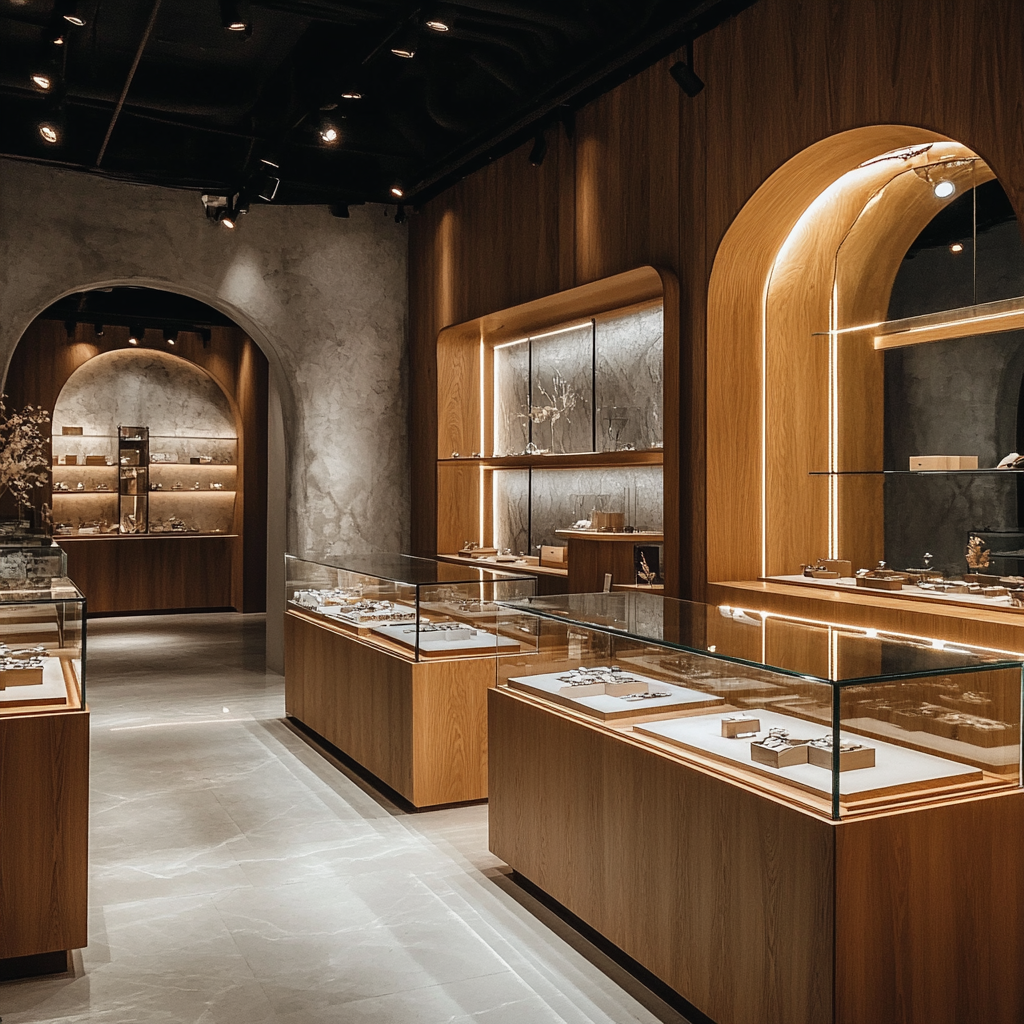
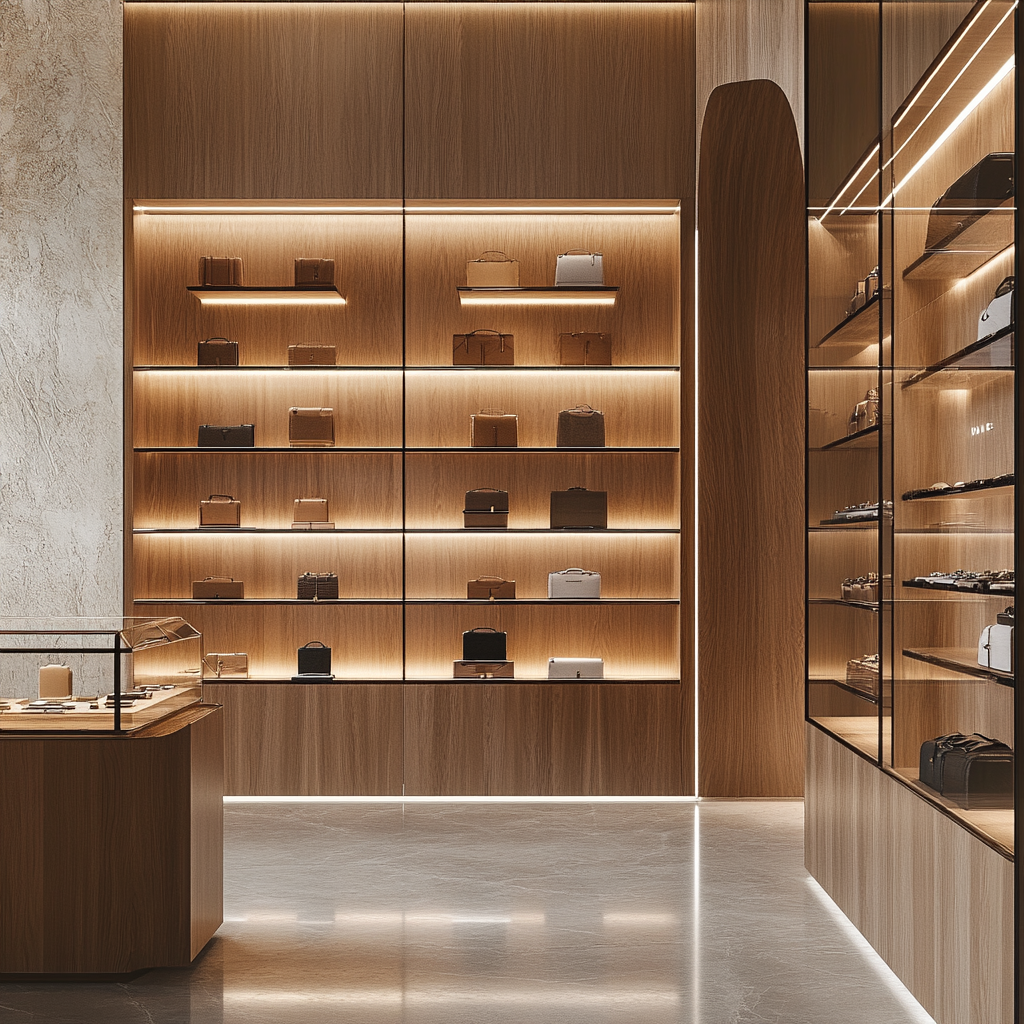
A well-designed store layout attracts customers and encourages sales. Retail display racks play a crucial role in shaping the shopping experience. They influence how products are presented and how customers navigate the store. By using the right display racks, retailers can create a visually appealing and functional shopping environment.
The Role of Display Racks in Store Aesthetics
Display racks shape the overall look of a store. They define spaces, create sections, and enhance the store’s theme. A well-arranged display makes a store more inviting. Customers feel comfortable exploring when products are neatly displayed.
Choosing the Right Display Rack Style
Different display racks suit different store aesthetics. Glass showcases create a modern and high-end look. Wooden racks add a rustic touch. Metal shelves give an industrial feel. Retailers should choose racks that align with their brand image. A consistent style builds brand identity.
Display racks should complement store colors and lighting. Light-colored racks brighten up small spaces. Darker racks create a sense of luxury. Strategic lighting enhances the overall effect. LED lights can highlight featured products and make displays more appealing.
A well-matched rack style improves the store atmosphere. Customers associate a polished display with product quality. This perception can increase trust and encourage purchases. A store with a cohesive look stands out from competitors.
Arranging Display Racks for Maximum Appeal
The arrangement of display racks affects the store’s visual balance. Symmetry makes a space feel organized. Asymmetry adds a dynamic touch. A mix of both keeps the layout interesting.
Placing taller racks along the walls keeps the center open. This layout creates a spacious feel. Lower racks in the center allow customers to see more of the store. Open sightlines encourage exploration.
Grouping similar products on specific racks makes browsing easier. Color coordination improves visual appeal. Customers often notice well-arranged sections and feel drawn to explore further. A neat arrangement makes products more attractive.
Transitioning from one section to another should feel natural. Well-placed racks guide the customer’s journey through the store. Strategic placement ensures that high-demand products remain visible.
Using Display Racks to Highlight Key Areas
Strategic rack placement directs customer attention. Certain areas of the store receive more traffic. Placing key products in these areas increases sales opportunities.
Creating High-Impact Entryway Displays
The entrance creates the first impression. A well-placed display rack draws customers in. Feature bestsellers or seasonal items at the front. This encourages impulse buys.
Rotating entrance displays keep the store looking fresh. Customers return when they expect to see something new. A display that changes frequently grabs attention.
The entryway should be welcoming and clutter-free. Customers should feel excited, not overwhelmed. A neatly arranged retail rack helps set the right tone.
Lighting enhances entrance displays. Spotlights or LED strips make products stand out. Customers are more likely to explore when they see an attractive display.
Directing Traffic with Well-Placed Display Racks
Display racks act as visual guides. Placing racks along pathways directs customer movement. Wide aisles create a smooth shopping flow. Customers prefer clear navigation.
Strategic rack placement prevents bottlenecks. Well-spaced racks keep customers comfortable. If they feel crowded, they may leave without buying.
Endcap displays encourage last-minute purchases. These racks stand at the ends of aisles and attract attention. Placing promotions or new arrivals here boosts visibility.
Eye-level placement increases engagement. Products placed at eye level get more attention than those on lower or higher shelves. Using display racks to position key products at this height increases sales potential.
Enhancing the Shopping Experience with Display Racks
A pleasant shopping experience encourages repeat visits. Display racks improve customer interaction with products. They influence how customers engage with the merchandise.
Encouraging Product Interaction
Customers appreciate easy access to products. Display racks should allow them to touch and inspect items. Glass showcases work well for valuable items while keeping them secure. Open shelves invite hands-on engagement.
Interactive displays create a stronger connection. Placing sample products on a rack lets customers experience them firsthand. This increases purchase confidence.
Grouping complementary products makes shopping convenient. A display rack showcasing pipes next to smoking accessories encourages bundle purchases. Customers enjoy the ease of finding related items together.
Signage on display racks provides helpful details. Well-placed signs explain product benefits. Clear labels guide customers to the right choices. When customers understand a product, they feel more confident in their purchase.
Creating a Comfortable Shopping Environment
A well-organized layout reduces shopping stress. Customers appreciate a store where they can navigate easily. Display racks should maintain a clean and uncluttered look.
Avoid overcrowding racks with too many products. Overloaded shelves look messy and make it hard to find items. A tidy display improves product visibility.
Wide aisles between display racks improve accessibility. Customers should move freely without bumping into shelves. A spacious store feels more inviting.
Seating areas near display racks enhance the experience. If customers feel relaxed, they stay longer. This increases the chance of making a purchase.
Adapting Display Racks for Different Store Layouts
Every store has a unique layout. Display racks should adapt to different retail spaces. The right placement strategy maximizes store potential.
Optimizing Small Retail Spaces with Display Racks
Small stores need smart space usage. Wall-mounted racks free up floor space. Corner displays utilize unused areas. Compact fixtures maximize available room.
Multi-functional racks save space. Adjustable shelves accommodate different product sizes. Rotating racks display more items in a small footprint.
Using mirrors makes a small space feel larger. Display racks with glass elements also create an open look. Customers feel less confined when a store appears spacious.
Vertical storage increases display capacity. Tall display racks make the most of the limited floor space. When designed well, they keep products accessible while improving organization.
Arranging Display Racks for Large Stores
Large stores need a clear structure. Without organization, customers feel lost. Well-placed display racks help define different sections.
Dividing the store into zones improves navigation. Each section should have a specific focus. Using display racks to separate areas makes the layout intuitive.
Anchor displays draw customers deeper into the store. Placing an eye-catching rack at the back encourages movement. Customers browse more when they have a reason to explore.
Consistent rack spacing maintains a comfortable flow. Too many racks close together create congestion. A balanced layout ensures customers enjoy their shopping journey.
Integrating Display Racks with Modern Retail Trends
Retail trends continue to evolve. Stores should update their display racks to stay relevant. Modern display solutions enhance customer engagement.
Minimalist designs keep displays sleek and uncluttered. Simple, open shelving creates a stylish look. Customers appreciate a modern, organized presentation.
Interactive digital screens on display racks provide product information. This feature adds convenience and improves the shopping experience. Customers access details with a touch.
Modular display racks offer flexibility. They adjust to changing inventory needs. Retailers can easily reconfigure displays to match seasonal trends.
Sustainable materials attract eco-conscious customers. Display racks made from recycled wood or metal appeal to modern shoppers. Brands with eco-friendly displays create a positive impression.
Conclusion
Retail display racks shape store aesthetics, guide customer movement and enhance shopping experiences. They create attractive layouts, highlight key areas, and adapt to different store sizes. The right display racks improve sales by making products more visible and accessible. Investing in well-designed display racks is essential for a successful retail environment.
Supporting Different Product Categories Efficiently

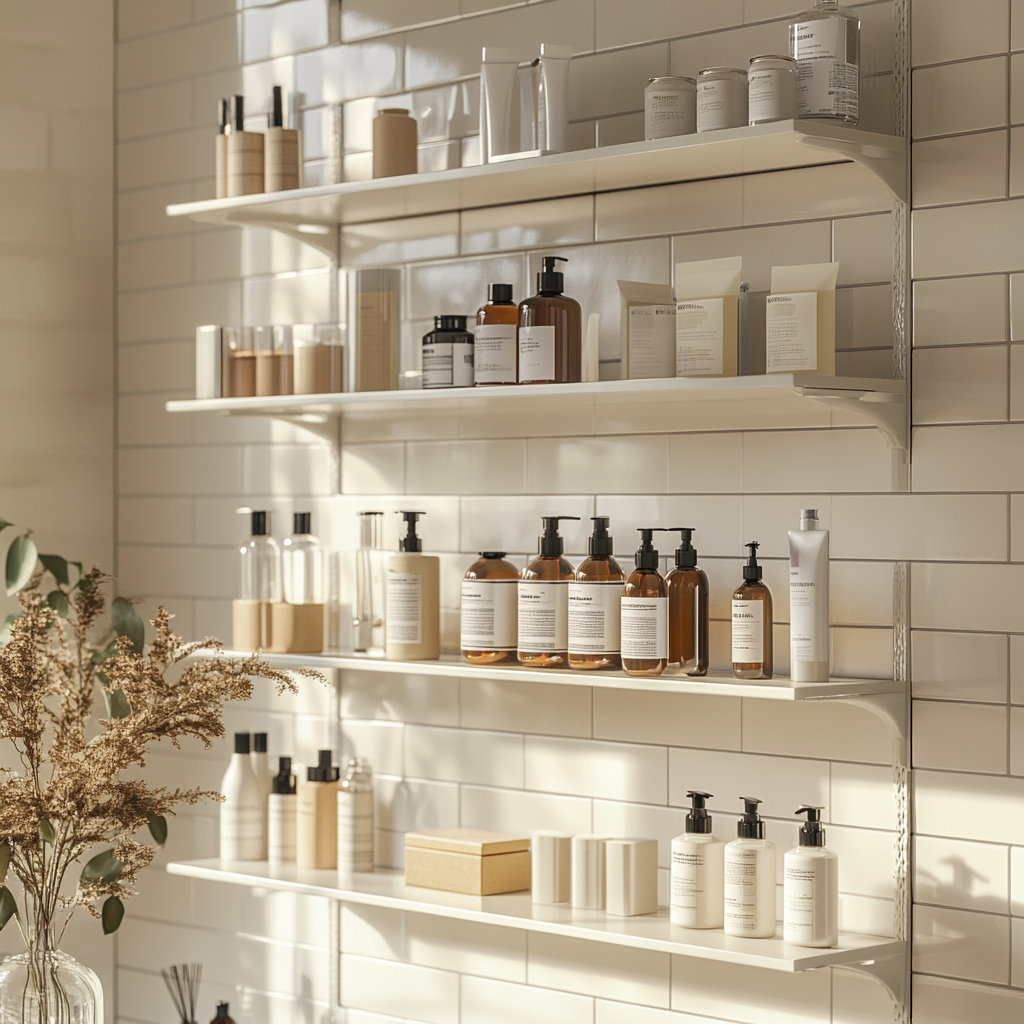
Retail display racks play a crucial role in organizing and showcasing various products. They provide flexibility for different product categories while keeping the store visually appealing. By selecting the right display racks, retailers can ensure that every product type gets the attention it deserves. This section explores how retail display racks support multiple product categories efficiently.
Adapting to Different Product Sizes and Shapes
Retailers sell products in various shapes and sizes. Display racks must accommodate these differences without causing clutter. Adjustable shelves, modular racks, and custom-made solutions help optimize space for diverse products.
Small products need compact shelving. Items like accessories, beauty products, and electronic gadgets require racks with small compartments. Slatwall racks and pegboards work well for these products. They allow for easy customization and product visibility.
Large items demand sturdy, spacious racks. Heavy-duty shelving units or gondola shelves support products like furniture, home appliances, or bulk food items. These racks ensure that large products remain stable and well-displayed.
Oddly shaped products require creative solutions. Some items do not fit standard shelving. Unique display racks, such as wire baskets or curved shelves, help showcase these products attractively. Smoke shops, for instance, sell pipes, vaporizers, and glassware that need specialized shelving. Custom fixtures accommodate these shapes while keeping them secure.
Retailers must also consider weight capacity. A rack that holds lightweight fashion accessories may not support heavy liquor bottles. Choosing the right material, such as metal, tempered glass, or wood, ensures durability and functionality.
Moreover, multi-tiered display racks enhance space efficiency. They allow retailers to showcase different products on various levels, making the best use of vertical space. This feature is useful for small stores with limited floor area.
In summary, display racks must adapt to different product sizes, shapes, and weights. The right selection enhances organization, prevents damage, and improves accessibility.
Ensuring Proper Product Categorization
Effective retail display racks help organize products into clear categories. This improves the shopping experience and boosts sales. When customers can easily locate what they need, they are more likely to make a purchase.
Categorization begins with defining product groups. Stores should separate different types of goods using dedicated display racks. For example, a smoke shop may use glass showcases for premium glassware, wooden shelves for tobacco products, and wire racks for accessories. This division makes shopping intuitive.
Signage also plays a crucial role. Well-labeled sections help customers navigate the store efficiently. Placing signs on display racks indicating product categories reduces confusion. It also saves time for both customers and staff.
Additionally, color-coded shelving improves organization. Retailers can assign specific colors to different categories. This method works well in supermarkets, hardware stores, and beauty shops. Customers associate colors with product types, making shopping faster and easier.
Furthermore, product flow matters. Placing complementary products close to each other encourages additional sales. For instance, a store selling smoking accessories can place lighters near rolling papers. Using tiered display racks to showcase these products together increases impulse purchases.
Retailers should also rotate displays to keep the store fresh. Seasonal or promotional products should have dedicated racks. Limited-time offers need prominent placement to attract attention. Gondola racks, end-cap displays, and freestanding units work well for temporary promotions.
In conclusion, proper categorization helps customers find products quickly. It also encourages additional purchases by creating logical groupings.
Optimizing Shelf Space for Maximum Efficiency
Shelf space is valuable in any retail setting. Maximizing its use ensures that every product gets proper exposure. Retailers must choose display racks that optimize space while maintaining a neat presentation.
Adjustable shelving provides flexibility. Retailers can modify shelf heights based on the size of the products they display. This feature is essential in stores that frequently update their inventory.
Vertical shelving increases storage capacity. Instead of expanding horizontally, stores can use tall racks to maximize vertical space. This method works well for stores with limited floor area. Retailers can display more products without creating a crowded environment.
End-cap displays capture attention. These racks, placed at the end of aisles, provide additional space for featured products. Stores use them to promote new arrivals or discounted items.
Nesting tables offer creative space solutions. These tables allow retailers to create layered product displays. Smoke shops, for example, can showcase different glass pipes on multiple levels, making them more visible to customers.
Proper spacing between products improves aesthetics. Cluttered shelves overwhelm shoppers. Leaving small gaps between items makes displays look more inviting. It also prevents damage, especially for fragile goods like glassware.
Additionally, retailers should use backstock storage wisely. Not all products need to be displayed at once. Keeping extra inventory in storage ensures that shelves remain neat. When items sell out, staff can quickly restock them without causing disruption.
In short, optimizing shelf space requires smart rack selection and layout planning. Proper spacing, adjustable shelves, and vertical storage improve efficiency and product visibility.
Adapting Display Racks to Changing Retail Needs
Retail businesses evolve constantly. Display racks must adapt to these changes to stay effective. Whether introducing new products or adjusting to seasonal trends, flexibility is key.
Modular shelving systems offer adaptability. Retailers can rearrange shelves, hooks, or compartments to match inventory changes. This flexibility allows stores to update displays without investing in new fixtures.
Temporary displays help retailers test new products. Pop-up racks or freestanding units showcase trending items without disrupting permanent setups. If a product sells well, the store can integrate it into its main display.
Seasonal product rotations require dedicated racks. Stores selling holiday-related items must adjust their layouts frequently. Christmas decorations, summer accessories, or Halloween merchandise need prominent display areas. Using mobile shelving units makes these transitions easier.
Additionally, multi-purpose racks increase efficiency. A single display unit should accommodate different types of products. Adjustable shelving, removable dividers, or pegboard backings allow for quick modifications.
Technology integration enhances modern retail displays. Some stores use digital screens on display racks to showcase product information or promotions. Smart shelving solutions, like weight-sensitive shelves, alert staff when stock levels run low. These innovations improve inventory management and customer engagement.
Finally, maintaining display racks is essential. Over time, racks experience wear and tear. Retailers should regularly check for damage, clean surfaces, and replace outdated fixtures. A well-maintained display enhances the store’s overall image.
To sum up, adapting display racks to changing retail needs ensures efficiency. Modular shelving, temporary displays, and smart solutions help retailers stay competitive.
Conclusion
Retail display racks play a crucial role in supporting different product categories efficiently. They adapt to various product sizes, ensure proper categorization, optimize shelf space, and adjust to evolving retail needs. Choosing the right racks enhances store organization, improves customer experience, and increases sales. Investing in flexible, well-structured display racks helps retailers manage their inventory better while keeping their stores visually appealing.
Increasing Brand Awareness with Customized Display Racks
Retail display racks do more than hold products. They help businesses stand out. A customized display rack boosts brand recognition and improves customer perception. When designed well, it makes a store more memorable. In this section, we explore how customized display racks enhance brand awareness.
Strengthening Brand Identity Through Visual Appeal
A store’s branding should be consistent. A customized display rack aligns with a brand’s identity. It reflects the store’s theme, colors, and style. This consistency builds recognition and trust among customers.
Custom display racks create a unique shopping environment. They reinforce a brand’s message. For example, a smoke shop selling premium glass products benefits from sleek, modern display racks. These racks should have a clean, minimalist design. This presentation makes the products look more luxurious. Customers associate this experience with the brand.
Branded colors and logos on display racks also reinforce identity. A rack featuring a store’s colors reminds customers of the brand. Over time, they recognize the store even before they enter. Logos strategically placed on racks create subtle brand reminders. These visual elements build familiarity.
Another way to strengthen identity is through material choices. A store selling eco-friendly products can use wooden or bamboo racks. This approach communicates sustainability. Customers associate the brand with environmentally friendly values. The display rack itself becomes part of the brand story.
Custom shapes and structures also impact branding. A brand targeting younger customers can use creative, eye-catching designs. A display rack shaped like a smoke cloud for a smoke shop makes the store memorable. It creates an experience rather than just holding products. Such designs turn ordinary shopping into something special.
Branded display racks help differentiate a business. In a competitive market, standing out is crucial. Customers remember unique shopping experiences. A custom retail display rack plays a key role in making that impression last.
Enhancing Customer Perception and Brand Trust
Brand trust is essential. Customers buy from brands they trust. A well-designed display rack improves perception. It shows professionalism and attention to detail.
Poorly organized stores create a negative impression. Cluttered shelves and random product placement look unprofessional. A customized display rack ensures organization. It presents products neatly and accessibly. When customers see an organized space, they assume the business is reliable.
Material quality also affects perception. Cheap, flimsy racks give the impression of low-quality products. A store selling high-end glass showcases should not use plastic racks. Instead, sturdy tempered glass or polished wood racks convey quality. Customers associate the display with the product. If the rack looks premium, the product feels premium.
Lighting is another factor. A display rack with built-in LED lighting highlights products. It draws attention and adds a modern touch. Well-lit displays make products look more appealing. Customers trust brands that present products professionally.
Custom racks also improve brand communication. Signage and product descriptions can be built into the design. A well-placed description educates customers about a product’s benefits. This approach reinforces brand expertise. Customers feel informed and confident in their purchase.
The customer experience matters. When customers feel good in a store, they return. A custom display rack contributes to this experience. It makes shopping easier and more enjoyable. Customers subconsciously link this positive experience to the brand.
Brand trust is built over time. Every detail counts. A retail display rack may seem small, but it plays a big role. It shapes customer perception and influences buying decisions.
Encouraging Social Media Engagement with Unique Displays
In today’s digital world, social media plays a big role in branding. Customers love to share interesting shopping experiences. A unique display rack encourages social media engagement.
Creative racks make a store more photogenic. Customers take pictures when something stands out. A smoke shop with an artistic glass showcase attracts attention. If customers find the display interesting, they post it online. This free promotion increases brand visibility.
Interactive displays boost engagement. A custom rack with a built-in selfie spot makes customers want to participate. If a store creates a fun experience, customers share it with friends. This word-of-mouth marketing strengthens brand awareness.
Hashtags and QR codes enhance social interaction. A display rack featuring a store’s Instagram handle invites customers to follow. A QR code linking to promotions or product details adds value. When customers engage with a brand online, they stay connected.
Limited-time-themed displays also encourage sharing. A rack designed for a seasonal promotion creates excitement. Customers rush to visit before it’s gone. If they post about it, others feel the urgency to check it out. These small touches create buzz around a brand.
Social proof matters. When people see others engaging with a brand, they feel more inclined to do the same. A retail display rack designed for social engagement increases visibility. It turns customers into brand ambassadors without extra effort.
Increasing Repeat Business Through Consistent Branding
A strong brand brings customers back. When shoppers remember a brand, they return. A customized display rack helps create this consistency.
Consistent branding reinforces identity. If a store uses the same style of display racks across locations, customers recognize it instantly. This familiarity builds trust. Customers prefer stores they feel comfortable in. A cohesive design makes them feel at home.
Display racks can also feature loyalty program details. A custom rack with a rewards sign reminds customers to return. If they know they’ll get benefits, they are more likely to visit again. A smoke shop offering discounts for returning customers should highlight this on display racks.
Seasonal updates keep customers engaged. While branding should stay consistent, minor updates create freshness. A display rack that changes slightly with promotions keeps things interesting. Customers return to see what’s new. This strategy maintains excitement without losing brand identity.
Custom racks also allow for cross-selling. If a display rack is designed for a specific product, related products can be featured nearby. This arrangement increases sales and keeps customers interested. When they see useful combinations, they return for more.
Branding is about repetition. The more customers see a brand, the more they remember it. A well-branded display rack ensures they see the same elements every time. Over time, this familiarity turns into customer loyalty.
A customized retail display rack is a powerful branding tool. It strengthens identity, improves perception, encourages engagement, and builds loyalty. By investing in a unique display solution, a business boosts brand awareness effortlessly. In a competitive retail world, standing out is key. A custom display rack helps achieve that goal.
Choosing the Right Retail Display Rack for Your Store
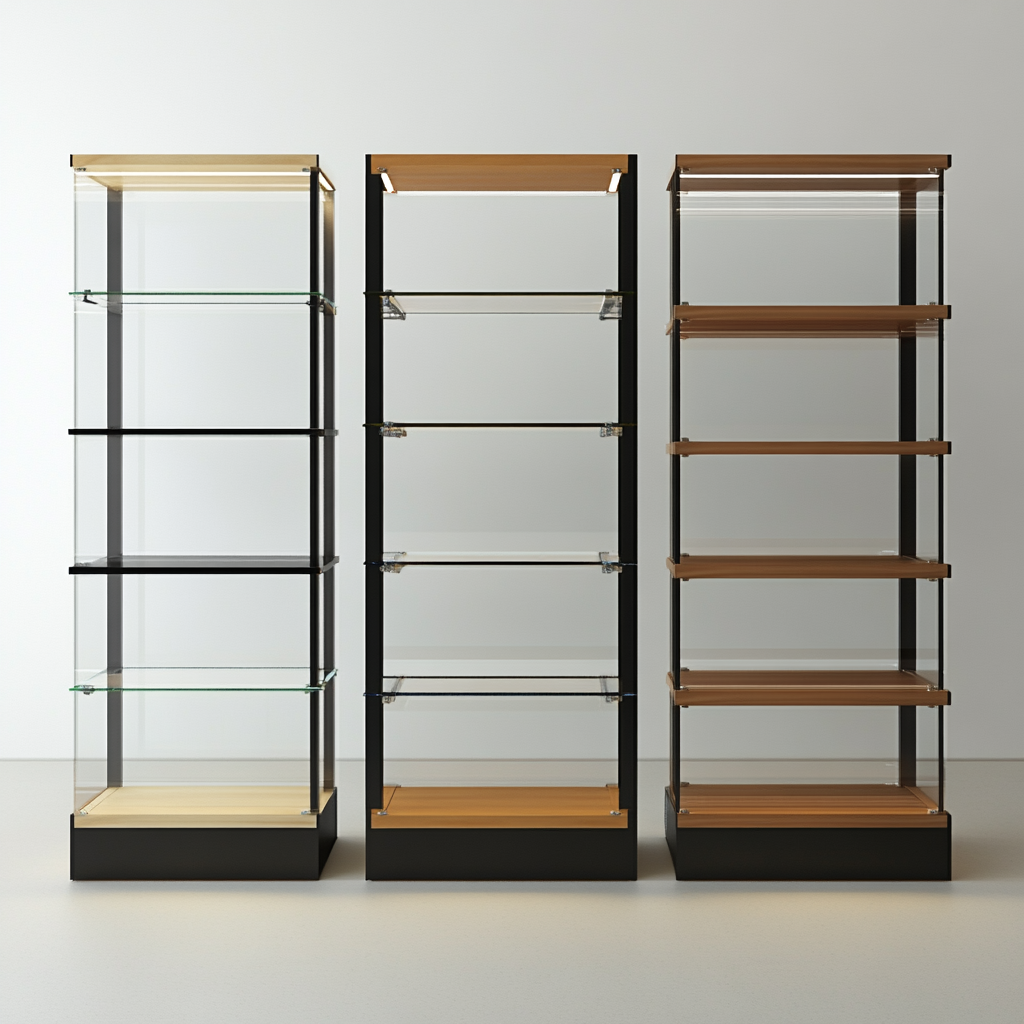
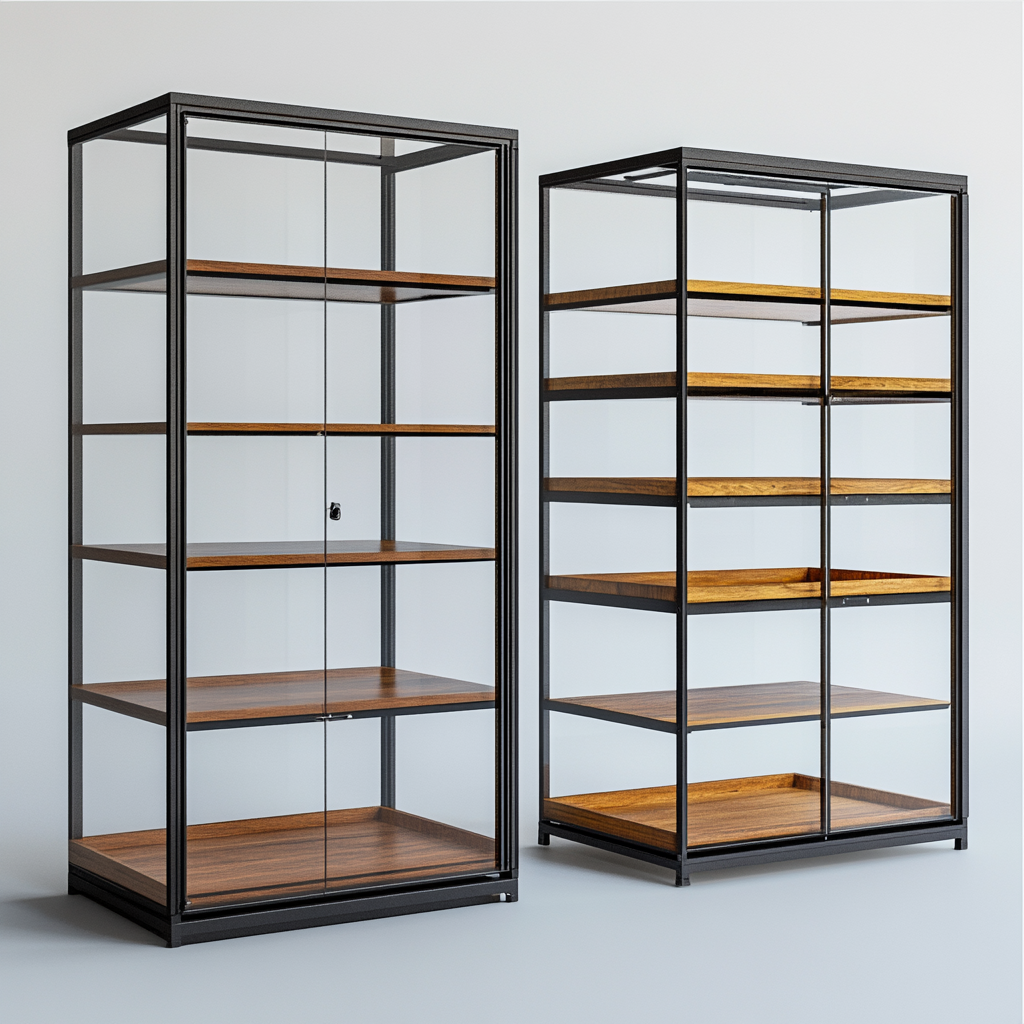
Selecting the right retail display rack is crucial for any store. It impacts product presentation, space efficiency, and customer interaction. A well-chosen rack enhances a store’s appeal and supports smooth operations. Below, we will explore key factors that help retailers choose the perfect display rack.
Understanding Your Store’s Needs
Every store has unique requirements. The right display rack depends on the type of products, store size, and customer behavior. Retailers must analyze their business needs before making a purchase.
First, consider the type of products to display. Fragile items, such as glassware, need sturdy racks with protective features. Heavy products require durable metal racks. Small items, like accessories, fit well on slatwall or pegboard displays.
Next, evaluate the available space. A small boutique needs compact display solutions. A large supermarket can use a variety of racks for different sections. Space optimization is key to maintaining a smooth shopping flow.
Customer movement also plays a role. In high-traffic areas, display racks should encourage easy browsing. In specialty stores, racks should highlight premium products. The right choice improves the shopping experience and increases sales.
Additionally, retailers should align their display racks with branding. A luxury store benefits from sleek, modern racks. A vintage store needs wooden or rustic-style fixtures. The design should reflect the store’s identity.
Retailers must also think about flexibility. Adjustable racks provide long-term value. They allow stores to change layouts without buying new fixtures. Modular racks work well for evolving product displays.
Finally, consider budget constraints. Expensive racks may offer premium aesthetics but are not always necessary. Affordable options with high durability provide better cost-effectiveness. Retailers must balance cost and quality.
Choosing the right display rack starts with understanding store needs. The right decision improves store functionality and product presentation.
Material and Durability Considerations
The material of a display rack affects its durability, appearance, and maintenance. Retailers must select the right material to ensure long-term use.
Metal racks are highly durable. They support heavy products and withstand frequent use. Many supermarkets and hardware stores prefer metal racks. They resist wear and tear, making them a long-lasting option.
Wooden racks offer a classic and warm appearance. They work well in high-end boutiques, bookstores, and specialty shops. However, wood requires regular maintenance to prevent damage. Moisture and scratches can shorten its lifespan.
Glass display racks create a sleek and modern look. They are perfect for high-value items like jewelry, electronics, and cosmetics. Tempered glass provides extra strength. However, glass requires careful handling and frequent cleaning.
Acrylic racks provide a lightweight and cost-effective alternative. They are commonly used in convenience stores and retail kiosks. Although less durable than metal, they are easy to replace and maintain.
Retailers should also consider mixed-material racks. Combining wood and metal offers both strength and elegance. A mix of glass and metal creates a stylish and durable solution. Hybrid options work well in modern retail settings.
The durability of a rack depends on its quality. Poorly made racks can collapse under weight. Investing in high-quality materials prevents accidents and ensures longevity.
Maintenance is another factor. Metal racks resist rust but need occasional cleaning. Wooden racks need polishing. Glass racks require frequent wiping to maintain a clear appearance. Retailers should choose materials that match their maintenance capacity.
Selecting the right material is crucial for durability. The best material choice depends on product weight, store theme, and maintenance requirements.
Customization and Aesthetic Appeal
A retail display rack should complement the store’s branding. Customization helps create a unique and attractive retail environment.
Custom racks allow retailers to choose colors, finishes, and designs that fit their brand. A boutique with a minimalist theme benefits from sleek white racks. A rustic store may prefer wooden shelves with a natural finish. Consistency in design strengthens brand identity.
Shape and structure also affect aesthetics. A curved glass display case adds elegance. A geometric metal shelf gives a modern touch. Unique rack designs create a memorable shopping experience.
Logo integration is another customization option. Display racks can feature engraved or printed brand logos. This enhances recognition and reinforces branding.
Lighting also plays a role. Built-in LED lighting makes products stand out. Jewelry stores often use illuminated glass display cases. Proper lighting enhances visibility and attracts customers.
Modular customization offers flexibility. Adjustable racks allow stores to modify displays based on trends and seasons. A store selling holiday gifts can rearrange racks to highlight seasonal products.
Aesthetic appeal influences customer perception. A well-designed store attracts more customers. It encourages them to spend more time browsing. The right display racks create a positive first impression.
Retailers should invest in racks that enhance their store’s appearance. A customized rack adds value and strengthens brand presence.
Functionality and Adaptability for Future Needs
Retail display racks must be functional and adaptable. Stores evolve, and racks should accommodate future changes.
Functionality involves ease of access. Customers should easily browse and pick products. Adjustable shelves help accommodate different product sizes. This flexibility improves the shopping experience.
Portability is another factor. Mobile racks with wheels allow quick rearrangement. Pop-up stores and seasonal shops benefit from portable displays. Fixed racks work better for permanent setups.
Adaptability also means accommodating new trends. A clothing store may shift from folded displays to hanging racks. A bookstore may expand its section for bestsellers. The right racks allow smooth transitions.
Space optimization is crucial. Multi-tiered racks maximize storage. Vertical shelving reduces floor clutter. Corner racks make use of empty spaces. Efficient layouts improve store functionality.
Durability contributes to long-term adaptability. A strong metal frame lasts for years. An adjustable wooden shelf supports different product sizes. Retailers should invest in long-term solutions.
Technology integration is another trend. Digital screens can be attached to display racks. Interactive displays engage customers. Modern retail racks go beyond storage—they create an experience.
Retailers must think about long-term usability. Functional and adaptable racks support business growth.
Conclusion
Choosing the right retail display rack requires careful consideration. Store needs, material durability, and customization all play a role. Functionality and adaptability ensure long-term value. Retailers must invest in racks that enhance product presentation and customer experience. A well-chosen display rack improves store efficiency and boosts sales.
Why Fairwill Display
When choosing a store fixture supplier, quality, affordability, and reliability matter. At Fairwill Display, we understand your business needs and provide the best display solutions. Whether you run a smoke shop, boutique, or wholesale store, our products help showcase your merchandise effectively. Here’s why partnering with Fairwill Display is the right choice for your business.
High-Quality Store Fixtures at Affordable Prices
As a business owner, you need durable display fixtures that enhance your store’s look. At Fairwill Display, we manufacture high-quality glass showcases, slatwall merchandisers, and checkout counters using E1-grade boards and tempered glass. These materials ensure strength, safety, and longevity, making them ideal for retail environments.
Unlike other suppliers, we offer affordable pricing without compromising on quality. Our direct factory pricing helps wholesalers and retailers reduce costs while getting top-tier display solutions. You no longer have to choose between quality and affordability—we provide both.
Custom Display Solutions Tailored to Your Needs
Every retail store is different, and we recognize the importance of customization. Whether you need custom-sized glass display cases, unique shelving designs, or branded fixtures, our team works closely with you to create the perfect solution.
We offer:
Custom sizes and finishes
Logo branding on displays
Adjustable shelves for product flexibility
LED lighting options for premium presentation
Our team provides expert advice on choosing the best fixtures for your space, ensuring they fit your store layout and enhance your product displays.
Reliable Supplier with Global Experience
Fairwill Display has been supplying store fixtures to wholesalers, boutique stores, and suppliers worldwide. Our main markets include the USA, Sweden, and Australia, where we have built a reputation for delivering high-quality products on time.
With over 50 skilled employees in our own factory, we control the entire production process, ensuring strict quality standards. You never have to worry about inconsistent quality or delayed shipments—we handle every order with care.
We understand international business requirements, including packaging, shipping regulations, and customs clearance. Our experienced team ensures smooth transactions and hassle-free delivery to your location.
Fast and Efficient Order Processing
Time is money in retail. You can’t afford delays when setting up your store. At Fairwill Display, we ensure:
Fast response to inquiries (usually within 24 hours)
Quick production turnaround for standard orders
Secure and efficient packaging to prevent damage
Reliable shipping options for worldwide delivery
We value your time and strive to deliver on schedule so you can focus on growing your business.
Expert Guidance on Store Displays and Merchandising
Choosing the right display racks and showcases can increase product visibility and boost sales. Our experts help you select the best fixtures based on your store type, available space, and product range.
We provide:
Recommendations on display layouts to improve store organization
Guidance on selecting materials that match your branding
Advice on fixture placement to drive customer engagement
Insights into trending designs that attract more shoppers
With our knowledge and experience, you can make smarter decisions and maximize your store’s potential.
Strong Customer Support & Long-Term Partnership
When you partner with Fairwill Display, you’re not just buying store fixtures—you’re gaining a trusted supplier dedicated to your success. Our customer-first approach means we’re here to help even after your order is delivered.
We offer:
Ongoing support for product installation and maintenance
After-sales service for any inquiries or concerns
Future order flexibility to accommodate your growing needs
Many of our clients return to us for repeat orders because they trust our quality, service, and reliability.
Contact Us for a Quote Today!
If you’re looking for high-quality, affordable, and reliable store fixtures, Fairwill Display is your best choice. We offer custom solutions, expert guidance, and global delivery to help your business succeed.
Send us an inquiry today and let’s start building your perfect store display!
